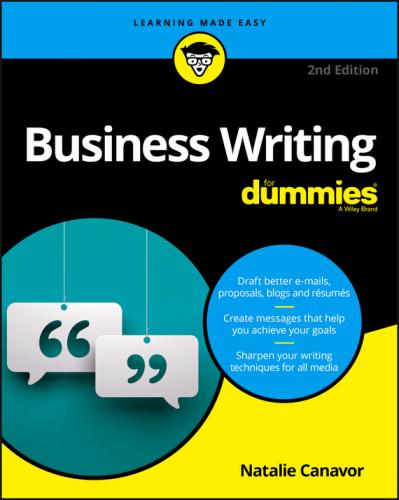This question relates to the most basic premise of this book. So often we overlook how different people are from each other. You feel that you are unique – and you are. So is everyone else. We each see the world through our own filters, unconsciously constructed of innate characteristics, personal experience, cultural values, and everything we grow up with and that happens to us.
The syntax of writing – the arrangement of words, phrases, and sentences – is a tool for delivering your messages. Like all tools, it must be used well. But the message is what matters. Understanding your own goals and practicing empathy enables you to build meeting points for true communication and relationships.
Improving your writing will open up your perceptions and sharpen your thinking. There’s an aphorism that says, “How do I know what I think until I write it?” In my view, writing is the best imaginable way to grow your understanding of other people, foster your business relationships, and work toward becoming your best and most successful self.
What could be more rewarding or interesting?
You now know why improving your writing will benefit you and have already begun building the foundation to do it. The next chapter shows you exactly how to strategize every message to accomplish your goals.
Chapter 2
Planning Your Message Every Time
❯❯ Strategizing for success before you write
❯❯ Knowing your goal and audience
❯❯ Making people care about your message
❯❯ Using the correct tone
❯❯ Finding opportunities to build relationships
Think for a minute about how you approached a recent writing task. If it was an email message, how much time did you spend considering what to write? A few minutes? Seconds? Or did you just start typing?
Now bring a more complex document to mind: a challenging letter, proposal, report, marketing piece, blog post, or anything else. Did you put some time into thinking about and shaping your message before you began writing, or did you just plunge in?
This chapter demonstrates the power of taking time before you write to consider whom you’re writing to, what you truly hope to achieve, and how you can generate the right content.
Adopting the Plan-Draft-Edit Principle
Prepare yourself for one of the most important pieces of advice in this book: Invest time in planning your messages. And that means every message. Even an everyday communication such as an email can have a profound impact on your success. Everything you write shows people who you are.
I can’t count the times I’ve received an email asking for a referral or an informational interview that was badly written and full of errors. I didn’t respond. Would you? Or a long, expensively produced document with an email cover note that’s abrupt and sloppy. A poorly written email message doesn’t help the cause – whatever the cause may be.
This strategic approach has no relation to how you learned to write in school, unless you had an atypical teacher who was attuned to writing for results. Start by tossing out any preconceived ideas about your inability to write, because in my experience, everyone can learn to write better.
When you have a message or document to write, expect your time to be divided equally between these tasks:
❯❯ Planning
❯❯ Drafting
❯❯ Editing
You probably wonder if this system helps you write faster or slower. For most people it’s a time shift. When you take a write-first-then-think approach, you probably get lost in the middle, then stare at your important messages for a while with vague questions about whether they could read better or be more persuasive. Planned messages are easy to organize, and the effectiveness is built in because you’ve already customized the content to your goal and reader.
The real issue is less about time and more about results. Planned messages bring you what you want much more often. Try the strategy I recommend and see what happens. My money is on more success. Also, this approach quickly becomes a habit and more – it becomes a problem solver. Practice it every day with routine messaging, and you’ll be ready to field big challenges with confidence.
Fine-Tuning Your Plan: Your Goals and Audience
A well-crafted message is based on two key aspects: your goal and your audience. The following section shows you how to get to know both intimately.
Your first priority is to know exactly what you want to happen when the person you’re writing to reads what you’ve written. Determining this is far less obvious than it sounds.
Consider a cover letter for your résumé. Seen as a formal but unimportant necessity toward your ultimate goal – to get a job – a cover letter can just say:
Dear Mr. Blank, Here is my résumé. – Jack Slade
Intuitively you probably know that this isn’t sufficient. But analyze what you want to accomplish and you can see clearly why it falls short. Your cover letter must:
❯❯ Connect you with the recipient so that you become a person instead of another set of documents.
❯❯ Make you stand out from the competition in a positive way.
❯❯ Persuade the recipient that your
